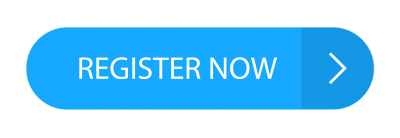Analysis of the Development of STEM-Based Independent Curriculum Learning Tools Integrated with the Muaro Jambi Temple Antiquities Site
Abstract
Keywords
Full Text:
PDFReferences
Anik. (2021). Increasing motivation to learn a blended learning model. Basicedu Journal, 5(4), 2339-2347.
Banat, A., & M. (2020). Learning independence of PE students using Google Classroom media through hybrid learning in learning the education profession during the Covid-19 pandemic. Journal of Educational Technology (JTP), 13(2), 119. https://doi.org/10.24114/jtp.v13i2.20147
Basri, H. (2014). Using qualitative research in accounting and management studies: not a new agenda. Journal of US-China Public Administration, 11(10), 831-838. https://doi.org/10.17265/1548-6591/2014.10.003
Hamid, A., & Hadi, M. S. (2020). Flipped learning design as a solution to the 21st century PAI learning model. Quality, 8(1), 149. https://doi.org/10.21043/quality.v8i1.7503
Hikmawati, Suastra, I. W., & Pujani, N. M. (2021). Local wisdom in Lombok island with the potential of ethnoscience for the development of learning models in junior high school. Journal of Physics: Conference Series, 1816(1). https://doi.org/10.1088/1742-6596/1816/1/012105
Kurniawan, D. A., Astalini, Kurniawan, N., & Anggraini, L. (2019). Students' attitude towards science based on investigation and correlation: Enjoyment of learning and interest in spending time on science. Science Education Journal (SEJ), 3(1), 1-13.
Kurniawan, D. A., Astalini, A., Kurniawan, N., & Pathoni, H. (2019). Correlation analysis of student attitudes and student discipline towards science in junior high school students in Jambi Province. Journal of Physics Education and Science (JPFK), 5(2), 1-13.
Leng, Z., Zhu, R., Hou, W., Feng, Y., Yang, Y., Han, Q., ... & Zhao, R. C. (2020). Transplantation of ACE2-mesenchymal stem cells improves the outcome of patients with COVID-19 pneumonia. Aging and disease, 11(2), 216.
Mohamed, Z. M., Abdul Majid, A. H., & Ahmad, N. (2015). Tapping new possibilities in accounting research, in qualitative research in accounting, Malaysian case. Publisher Universiti Kebangsaan Malaysia, Kuala Lumpur, Malaysia.
Nababan, S. A. (2017). Development of approach-based learning tools. Bina Gogik, 6(5), 24-36.
Nurhayati, R., Waluya, S. B., & Asih, T. S. N. (2019). Blended inquiry learning model of flipped classroom strategy with interactive media to improve critical thinking skills. UNNES Postgraduate National Seminar, 4.
Puspitarini, M. N. A. (2022). Blended learning as a means of optimising online learning in the new normal era. SCAFFOLDING: Journal of Islamic Education and Multiculturalism, 2(02), 106-121. https://doi.org/10.37680/scaffolding.v2i02.535
Rahayu, W. E., & S. (2015). Development of ethnoscience-based integrated science module on the theme of energy in life to instil students' conservation spirit. Unnes Science Education Journal, 4(2), 219-226.
Roudlo, M. (2020). Critical thinking skills and learning independence through a flipped classroom learning model with a STEM approach. UNNES Postgraduate National Seminar, 20, 292-297.
Shidiq, A. S. (2016). Ethnoscience-based chemical science learning to increase student interest and learning achievement. National Seminar on Chemistry and Chemical Education VIII, 1(1), 227-236.








.png)